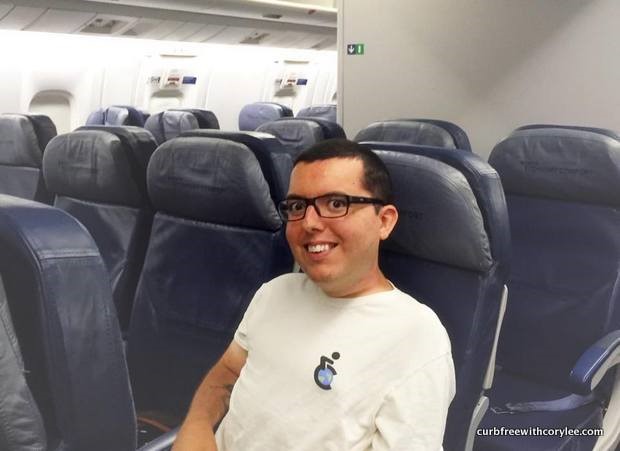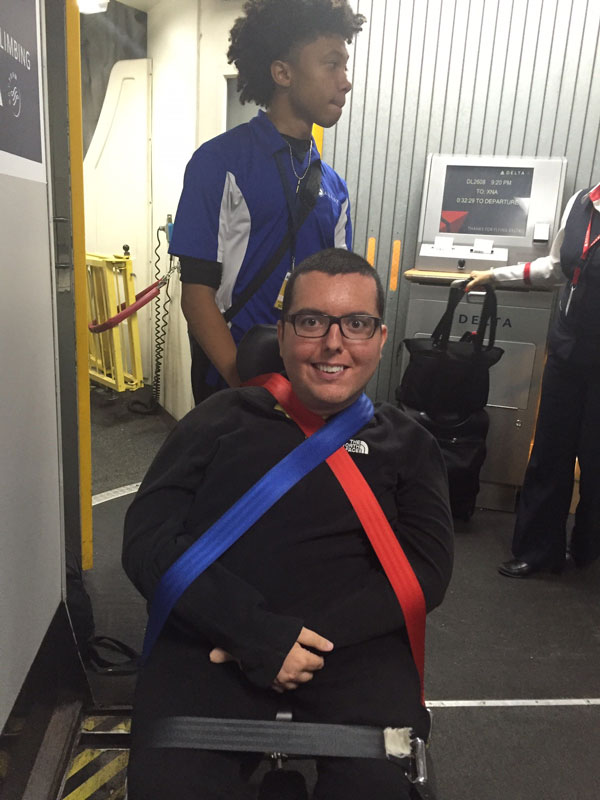While flying is the quickest way to travel, it comes with the stress of long lines, the dreaded airport security pat-down, not to mention clothing and loose change removal, and sometimes even lengthy delays. Another stressor is wheelchairs frequently get damaged when flying, so this adds a whole new set of things to consider and plan for when heading to the airport. However, as a frequent flyer who loves earning those miles, I've learned much throughout my expeditions. Therefore, I've compiled a list of the top tips and tricks to help your wheelchair arrive unscathed and ready for your next adventure!

#1 - Do your homework and contact the airline ahead of time.
I've found it's always best to conduct some homework and pre-planning well before my arrival at the airport. By calling the airline directly, I've been able to find out that some airlines have a designated spot on the airplane to stow a folding manual wheelchair, but this requires getting to the airport as early as possible to claim this coveted spot.
For power wheelchair users like me, I've learned that my wheelchair must go into the cargo area for transportation but the airline will provide staff to assist me in order to make it go smoothly. The key here is to clearly notate what type of wheelchair you'll be using when you make your online reservations. To ensure the airline is well prepared, I also call them to alert them not only of my assistance needs but also to provide them with specifics about my wheelchair. It's important that they understand never to lay it on its side – this can damage a power wheelchair. Additionally, I provide them with my chair's dimensions, the type of battery it has, its weight, and whether it needs to be collapsed. I highly recommend providing them as many special handling instructions as possible to ensure your chair arrives in tip-top shape.
#2 - Gate Check

Whether traveling with a manual or power wheelchair, always request gate check, along with a gate-check claim ticket. Gate check means you stay in your wheelchair until you reach the door of the airplane, which not only makes for more comfortable seating while waiting to board the flight but also means your chair will go straight into the cargo area via baggage handlers as opposed to going through the automated belt system. This definitely reduces the risk of damage to your chair. Plus, like most human beings, when a baggage handler puts a face with the chair, it makes it more personal and they are more likely to handle your wheelchair with greater care and concern. You'll probably want to take a few photos at this point just in case you need documentation regarding the condition it was in prior to turning it over to airport personnel.
#3 - Labels
Another lesson I've learned is to place labels on all of the primary parts of my wheelchair, just in case the airport handlers need to put the chair in push mode or break it down to fit into the cargo area. I recommend including labels with your name, address, phone number, flight number, and instructions for disassembling and reassembling your chair. If the airline has to disassemble your chair, they are required to put it back together prior to giving it back to you. Instructions can save a lot of time and headaches.
Another great tip is to make customized labels with your picture on them, as it usually takes a team of three to five people to load your chair into the cargo area. Once again, if the baggage handler hasn't had the opportunity to meet you, putting a face with the chair makes it more real. I've even gone as far as adding the phrase, "This is the only way I can get around" below my picture – really makes it hit home!
#4 - Take easy-to-lose parts with you on the plane
I've found that removing spare parts or pieces that may get lose during transit a great way to reduce stress while flying. These parts are often compact enough to take on the plane in carry-on luggage. Whether you use a manual or powered wheelchair, I highly suggest removing the leg rests, headrest, and portable seat cushions (if possible). I've found that placing these items inside a carry-on suitcase cuts down on needed luggage space and makes sure they don't fall on someone's head should they shift in the overhead bin during the flight.
#5 - Develop a disassembly/reassembly and loading strategy
Everyone knows that duct tape can be used for everything and this holds true for both manual and power wheelchair travelers, too! If you have a wheelchair that folds, I suggest folding it up and duct taping the sides to hold it together. This gives the baggage handlers a nice compact chair, which is less likely to get damaged during loading and unloading. I prefer to keep my chair in one piece for transport, but I so always label the pieces should the airline need to disassemble my chair at the last minute. Anything that is protruding is more likely to get damaged, so I often try to duct tape things in place. This makes for easy reassembly but also ensures a key feature for getting around isn't destroyed. Lastly, brightly colored labels with instructions for locking and unlocking the brakes is a must for both manual and power wheelchairs alike!
#6 - Plan for the worst, hope for the best!
By using these tips, your wheelchair is much more likely to arrive exactly as it departed! However, with the key theme of plan, plan, and plan some more, it's always a good idea to pack a few extra tools should a slight mishap occur. I recommend bringing extra nuts, bolts, allen keys, and even a wrench should one of these small items happen to fall off during transport. This will save both money and time and can get you back on your roll much more quickly than waiting for a company to arrive to make small repairs. If for any reason your chair has significant damage, please keep in mind that the Air Carrier Access Act provides full protection for your wheelchair on any flights within the United States. For international travel, please check with your airline for coverage. Keep in mind that most travel insurance also provides mobility equipment protection.
Like the old saying goes, "If you fail to plan, you plan to fail." I've found that planning not only reduces my stress levels, but it often makes everything I fear dissolve into oblivion. The TSA has improved its security protocols greatly for those with special mobility needs. The airlines are dedicated to eliminating damage to wheelchairs and have seen a sharp decline in damages mobility equipment cases over the last several years. Finally, by using these tips and tricks, you too can fly the friendly skies and embark upon your next adventure with a sense of wonder – and luckily, an undamaged wheelchair in tow!
About the Author
After being diagnosed with Spinal Muscular Atrophy at the age of two, Cory Lee's thirst for adventure never ceased. He went on many trips around the U.S. when he was younger, and then started taking things internationally when he turned 15. Since then, Cory has traveled to 21 countries across six continents, all while managing to start up his travel blog Curb Free with Cory Lee, where he shares his accessible, and sometimes not-so-accessible travel adventures with others. Cory is a member of the Society of American Travel Writers (SATW) and the North American Travel Journalists Association (NATJA). He has been featured in the Los Angeles Times, USA Today, in a nationwide segment for CBS News, Lonely Planet, and many others. His blog won the 2017 Best Travel Blog Gold Lowell Thomas Award. He hopes to inspire other wheelchair users to roll out of their comfort zone and see all of the beauty that the world has to offer.
Cory Lee's ride is a Quickie QM-710.
Most of the stories here on Live Quickie were submitted by readers. Do you have a story to tell? We'd love to hear it. Submit your story here.